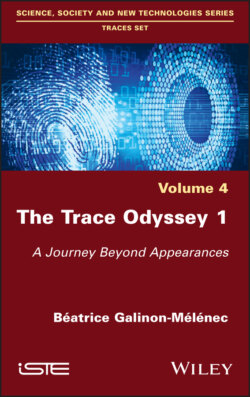Читать книгу The Trace Odyssey 1 - Beatrice Galinon-Melenec - Страница 22
I.15. Homme-trace, a universal anthropological paradigm
ОглавлениеAt the end of this Introduction, we propose the anthropological definition of a human being interpreted as “Homme-trace” (“Ichnos-Anthropos”). This angle of approach, which constitutes the backdrop of The Trace Odyssey 1, needs to be integrated by the reader otherwise the reader may take “white for black” (Du Bellay 1568)51 and vice versa.
DEFINITION.– The Homme-trace52 and corps-trace. The term Homme-trace refers to an approach to the human condition as an individual living in a set of multi-scale interactions that make them not only a producer of traces (their actions produce conséquences-traces on the milieu/environment)53 but also a construct of traces. He/she does not have a body. They “are” their body – understood as a body not cut off from the mind. This body – called the “corps-trace” – integrates the conséquences-traces of their interactions with the milieu54, these interactions functioning in feedback loops that combine with each other.
This definition applies to all humans (see Figure I.6).
Figure I.6. The anthropological dimension of the Homme-trace paradigm applicable to every individual in the world
In the conclusion of the book L’Homme-trace : perspectives anthropologiques des traces contemporaines (Galinon-Mélénec 2011)55, we also proposed to study more specifically certain traces that humans leave in their milieu/environment. These are:
– the “primary traces”, conséquences-traces of the only vital presence in a milieu. In the continuation of The Trace Odyssey 1, we give several examples of the analysis of these primary traces, particularly in the chapter devoted to police investigation;
– the “secondary traces”, conséquences-traces of an individual’s progress in the creation of tools, with a view to improving responses to their needs and wants. This type of trace corresponds to the evolution of technology. We will see in the continuation of The Trace Odyssey how technological progress is the result of progress in the evolution of the “Homme-trace”, but also how, conversely, it produces changes in a person’s corps-trace, because of its uses. This is illustrated in the chapter devoted to the implementation of the digital society; and
– the “tertiary traces”, the conséquences-traces of the way in which an individual construes their relations with the world, at the root of the regulatory texts and laws produced by organizations and institutions. This is discussed when we recall (see Figure I.7) that the rules of the game of digital society are, in principle, derived from the need to protect humans endangered by the actions of other humans. This refers, for example, to international negotiations on the protection of personal data, endangered by the poorly controlled flow of pieces of information, for which an unregulated Internet is inappropriate and even dangerous.
